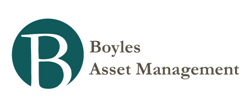Money and Finance
- Links
Total Addressable Market: Methods to Estimate a Company’s Potential Sales - by Michael J. Mauboussin and Dan Callahan [H/T @trengriffin] (LINK) Is Silicon Valley in Another Bubble . . . and What Could Burst It? (LINK) Bill Gross' September...
- Hussman Weekly Market Comment: Low And Expanding Risk Premiums Are The Root Of Abrupt Market Losses
Link to: Low and Expanding Risk Premiums are the Root of Abrupt Market Losses Through the recurrent bubbles and collapses of recent decades, I’ve often discussed what I call the Iron Law of Finance: Every long-term security is nothing more than a claim...
- Target Risk, Not Return
From Seth Klarman, via Margin of Safety:Targeting investment returns leads investors to focus on upside potential rather than on downside risk....Rather than targeting a desired rate of return, even an eminently reasonable one, investors should target...
- Oilprice.com’s Interview With Mike “mish” Shedlock
Link to: Oilprice.com’s interview with Mike “Mish” Shedlock *** I don’t necessarily agree with everything he says, but this is an interesting interview. If you substitute ‘undervalued stocks’ in place of ‘gold’ in his recommendation of...
- Hussman Weekly Market Comment: Cash And Credit - Implications For The Financial Markets
So what is the effect of creating an extra $600 billion dollars of monetary base by having the Fed purchase $600 billion dollars of Treasury debt? The same thing that happens anytime any security is issued. Somebody has to hold it, and the returns on...
Money and Finance
Seth Klarman on the Painful Decision to Hold Cash
Excerpt from Seth Klarman’s 2004 letter, but words that I think ring very true today as well.
It wouldn’t be overstating the case to say that investors face a crisis of low returns: less than they want or expect, and less than many of them need. Investors must choose between two alternatives. One is to hold stocks and bonds at the historically high prices that prevail in today’s markets, locking in what would traditionally have been sub-par returns. If prices never drop, causing returns to revert to more normal levels, this will have been the right decision. However, if prices decline, raising prospective returns on securities, investors will experience potentially substantial mark to market losses, thereby faring considerably worse than if they had been more patient.
The alternative is to remain liquid, defy the steady drumbeat of performance pressures, and wait for the prices of at least some securities to drop. (One doesn’t need the entire market to become inexpensive to put significant money to work, just a limited number of securities.) This path also involves risk in that there is no certainty whether or when this will occur; indeed, securities prices could rise further from today’s lofty levels, making the decision to hold cash even more painful. Meanwhile, holding out for better returns involves a (potentially lengthy) period of very low (albeit certain) positive returns available from today’s short-term U.S. Treasury instruments.
While we have strong suspicions, it cannot be said with certainty which path will prove wisest. What is clear is that just about everyone will choose the former one. Those in the investment business compete on the basis of short-term, relative (not absolute) investment performance, and prefer to follow the herd (at the price of assured mediocrity) rather than stand apart (risking severe underperformance). From a business perspective, how much better to be actively deploying capital, even if the investments are mediocre, than to be stalled in neutral; the employees keep busy, while the clients confuse decisions with diligence, activity with insight, and a fully invested posture with a worthwhile portfolio.
…
Some argue that holding significant cash is gambling, that being less than fully invested is akin to market timing. But isn’t a yes or no decision the crucial one in investing? Where does it say that investing means always buying something, even the best of a bad lot? An investor who can’t or won’t say no forgoes perhaps the most valuable tool available to investors. Charlie Munger, Warren Buffett’s long-time partner, has counseled investors, “Look for more value in terms of discounted future cash flow than you’re paying for. Move only when you have an advantage. It’s very basic. You have to understand the odds and have the discipline to bet only when the odds are in your favor.”
- Links
Total Addressable Market: Methods to Estimate a Company’s Potential Sales - by Michael J. Mauboussin and Dan Callahan [H/T @trengriffin] (LINK) Is Silicon Valley in Another Bubble . . . and What Could Burst It? (LINK) Bill Gross' September...
- Hussman Weekly Market Comment: Low And Expanding Risk Premiums Are The Root Of Abrupt Market Losses
Link to: Low and Expanding Risk Premiums are the Root of Abrupt Market Losses Through the recurrent bubbles and collapses of recent decades, I’ve often discussed what I call the Iron Law of Finance: Every long-term security is nothing more than a claim...
- Target Risk, Not Return
From Seth Klarman, via Margin of Safety:Targeting investment returns leads investors to focus on upside potential rather than on downside risk....Rather than targeting a desired rate of return, even an eminently reasonable one, investors should target...
- Oilprice.com’s Interview With Mike “mish” Shedlock
Link to: Oilprice.com’s interview with Mike “Mish” Shedlock *** I don’t necessarily agree with everything he says, but this is an interesting interview. If you substitute ‘undervalued stocks’ in place of ‘gold’ in his recommendation of...
- Hussman Weekly Market Comment: Cash And Credit - Implications For The Financial Markets
So what is the effect of creating an extra $600 billion dollars of monetary base by having the Fed purchase $600 billion dollars of Treasury debt? The same thing that happens anytime any security is issued. Somebody has to hold it, and the returns on...

